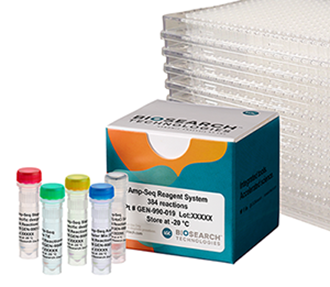Amp-Seq One, a new one-step targeted GBS workflow is launching in 2025.
For early access and to find out moreRedefining simplicity in targeted sequencing
Amp-Seq is a mid-plex targeted genotyping by sequencing workflow for agricultural biotechnology genotyping on an industrial scale. The patent pending Amp-Seq technology focuses on workflow simplicity paired with automatability, fastest processing time and unparalleled cost effectiveness. Amp-Seq delivers a solution that enables in-house genotyping on an unprecedented scale.
Key benefits
- Performance - High design success rates and SNP call rates*
- Simple, easy to adopt workflow. See figure 1 on the workflow tab.
- Simple and user friendly protocol
- Minimises impact of user errors
- Low number of reaction components
- Cost effective
- Reducing sequencing costs up to 50%*
- Reducing labour costs by minimising hands-on time*
- Low reagent costs and ultra-low reactions volumes*
- Increased throughput and reduced turnaround time by up to 30%*
- Industry leading protocol turnaround time - up to 1.8X faster*
- Same-day-sequencing
- Pool of thousands of samples and target up to 5,000 markers per sample
- Compatibility with undiluted crude input material*
- Reduced environmental impact with ambient temperature stable components
- Reduce dry ice usage, CO2 emissions and shipping costs
- Reduced energy consumption and freezer space requirements
- Confidence in supply
- LGC Biosearch Technologies manufactured reagents
- Extensive on- and off-site local support resources
- High-quality standards and manufacturing accreditations
* Validated against the targeted sequencing technologies most prevalently used in the agricultural biotechnology industry. Review the Amp-Seq application note for full details.

Resources
- App note: Amp-Seq (general)
- App note: Amp-Seq on Illumina NextSeq
- App note: Amp-Seq on Complete Genomics DNBSEQ-T7
- App note: Amp-Seq and sbeadex Lightning (bovine)
- Manual: Amp-Seq Reagent System manual (please enquire via request form)
